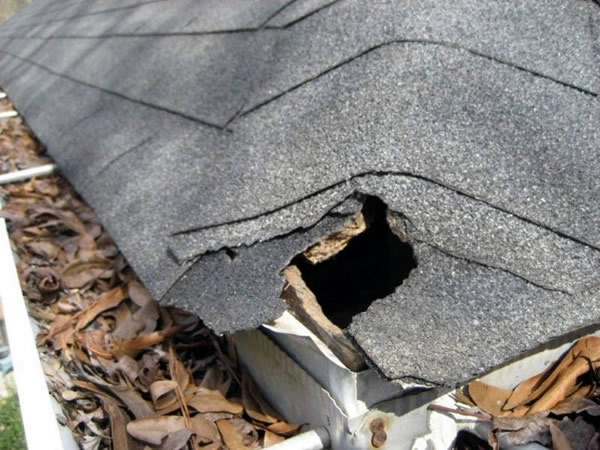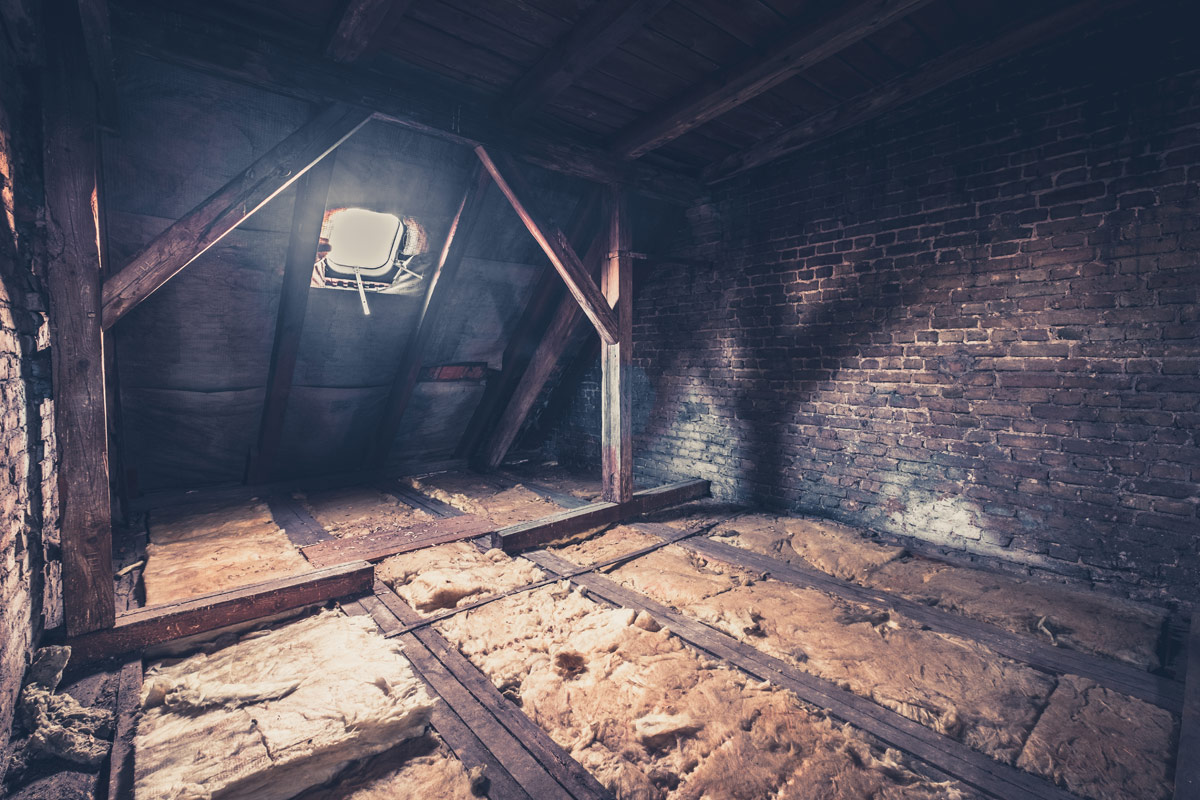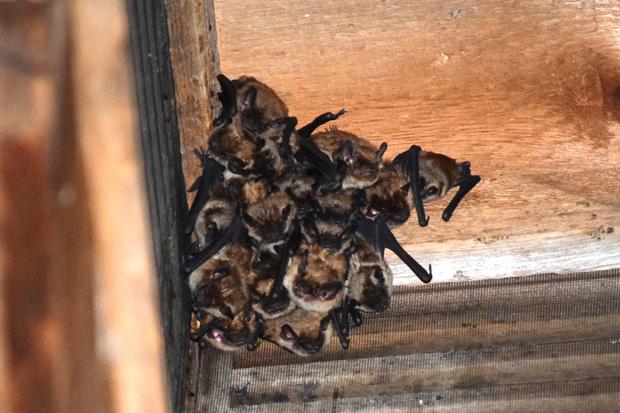Waking up to a bat flying around inside your home can be a harrowing experience. It can also be an indication of a possible structural ingress (small entrance area) issue, or a weak point through which bats can enter your home.
Evidence Of Bat Activity
Oftentimes, the first signs of bat activity a homeowner experiences include noises heard in the ceiling or the sighting of a bat inside of the living space. If you’re hearing a light scratching, clicking or squeaking sound, this is commonly associated with bat activity in your wall voids or your attic. If you have bats in your home, contact us today for bat removal services.

When a bat has gained access into the living space, the most common avenue of entry is from the attic. While bats can, and will, enter your home through an open door or unscreened window, it is more likely that they entered via an opening into the attic space. Bats tend to follow drafts which often leads them to locate small gaps and cracks on the exterior of structures. This allows them to find their way into the home and sometimes even high-traffic living areas.
While bats do make their way into homes, there are various reasons and means of entering. If a bat has entered your home, there are three likely scenarios for why it has happened.
Reasons Why Bats Enter Homes
- Random Bat Entry: Sometimes a single bat can find its way through open doors, windows, or any other small opening into your home. These situations may be near impossible to protect against, and this event can occur anytime. However, this happens most often during the late summer months, around August, due to newly volant juveniles.
- Non-maternal Colonizing Bats: Common in the greater Twin Cities metro service area, these infestations involve a colony of male bats entering your home. Luckily, these infestations are typically fewer in number than maternal colonies, but are the most frequent cause of a bat entering the living area. This situation can occur at any time of year, but it often peaks in the late autumn month of October and runs through February as they overwinter in attics and voids of homes. During this time, they are waking and relocating with precipitous temperature changes. This can sometimes lead them into the living area.
- Maternal Colony: This infestation occurs when a female grouping of bats uses attics and other structural voids to give birth and raise juveniles. This colonizing is often the most extreme and becomes generational as female juveniles are habituated to the structure, and will oftentimes return to birth their own young.
Homeowners will often assume that if they see a bat in their living area, it exists because of the random bat scenario. This is statistically the least likely scenario, and it should not be assumed that no greater colony exists unless a thorough inspection of the structure’s exterior and attic has been completed.
If two bats enter the living area in a year, it is nearly a guarantee that an entire colony is present in the home. In response to these events, it’s important to complete an inspection and any recommended follow up service to ensure the safety of the structure along with the living or working environment.
Removing The Bat Infestation
When removing a bat infestation it’s important to call a professional bat control technician. These wildlife removal experts are specifically trained and equipped to safely capture and remove bats from the interior of homes. In order to remove the bats, emergency bat control professionals respond in three steps:
 Quarantine The Bat: If the bat flies into a room with a door, the professional will close the door and secure the gap at the bottom by firmly wedging a towel into the space to prevent escape. Knowing that the bat is in that one room vs. “somewhere in the house” will greatly improve the odds of capture. Bats are very adept at finding out-of-the-way places to hide, so limiting the search area by quarantining the bat in one room is greatly beneficial.
Quarantine The Bat: If the bat flies into a room with a door, the professional will close the door and secure the gap at the bottom by firmly wedging a towel into the space to prevent escape. Knowing that the bat is in that one room vs. “somewhere in the house” will greatly improve the odds of capture. Bats are very adept at finding out-of-the-way places to hide, so limiting the search area by quarantining the bat in one room is greatly beneficial.- Capture The Bat: It is always important to avoid any physical contact with the bat. Bats are a rabies vector species, and the rabies virus can be transmitted to humans by a bite or scratch. Proper safety protocols must be followed when capturing or handling bats, which professional bat technicians have been thoroughly trained in.
- Rabies Testing: Industry protocol regarding a bat found in a living space is to have the captured bat tested for rabies. While a small percentage of any given bat population will carry the rabies virus, bats are the preeminent rabies vector species tested in Minnesota.
Importance Of Rabies Testing
The reason testing the bat is recommended is that one could possibly be exposed to a bat with rabies and not know it. One example of this occurring would be a small child, elderly individual, infirm or inebriated individual, or a soundly sleeping person who might happen to roll over onto a bat that has landed on the bed and causes a scratch or bite response from the bat.
Although the odds of such an encounter might be numerically low, it remains a fatal disease in humans when not treated in a timely manner (before symptoms present themselves). Captured bats are then submitted to the U of M Veterinary Diagnostic Laboratory for rabies testing. Test results are generally available in a few days.
Should the bat test positive for the rabies virus, the MN Health Department will contact the exposed parties immediately to discuss the situation. It would be prudent to contact your health care professional at this time as well.
Next Steps
A follow up appointment will be scheduled to thoroughly inspect the home or business for identification of all active, secondary, and potential entry points. To properly evict a colony from your home, a bat eviction will need to be done in conjunction with exclusion, or the sealing up of entry points. The last step of this process is sanitation and disinfection of all accessible materials that have come into contact with guano and urine.
Dos & Don’ts of Bat Removal

Do:
- Crack a screened window or door while leaving the screen shut, as the bat will be attracted to the draft and land on the screen. Do not risk your safety to accomplish this.
- Quarantine the bat into a room when possible by closing the door and firmly wedging a towel in the crack below. This is important as a bat can fit through any crack ⅜ inch or greater. The bat removal technician’s ability to locate the bat increases greatly if it’s isolated to one part of the structure prior to their arrival. Do not risk your safety to accomplish this.
- Call for an emergency bat removal. Bat removal companies will dispatch their first available technician to capture the bat and bring it in for rabies testing.
- Consult with the CDC and or your physician regarding potential exposure
Don’t:
- Let them out of the house
- Attempt to kill or capture a bat
- Assume there has been no exposure
- Assume there is no colony
While having a bat in your home or business might be a worrisome event, remember to call a bat removal company to get the situation taken care of right away. If you’re located in the greater Twin Cities, MN area, contact Abra Kadabra Environmental Services for all of your bat eviction and exclusion needs!
——
**Disclaimer: It is never safe to handle a bat without proper training and protective equipment. Bats can carry rabies, and their excrements can carry dangerous zoonotic diseases. Consult CDC guidelines.

